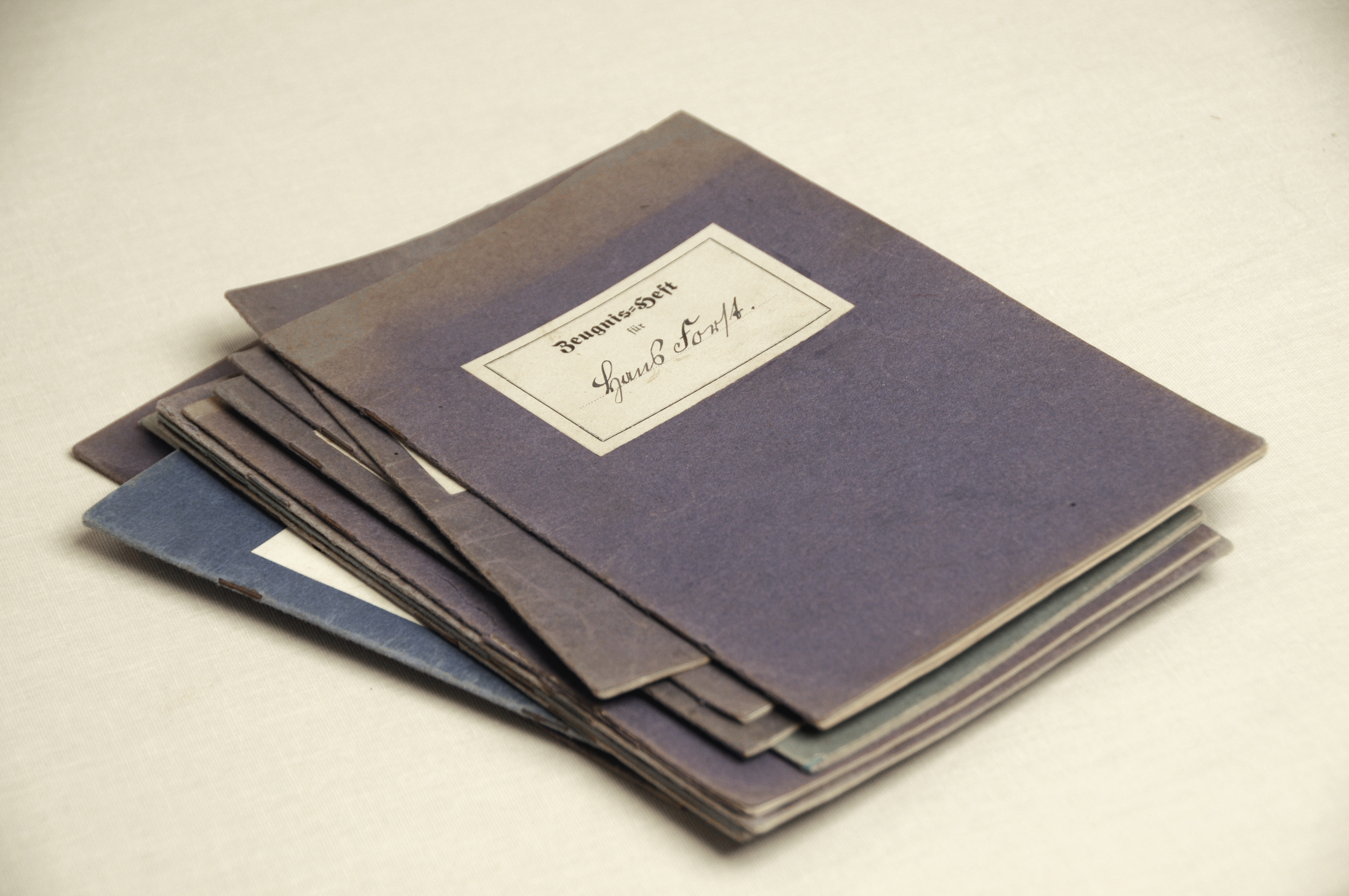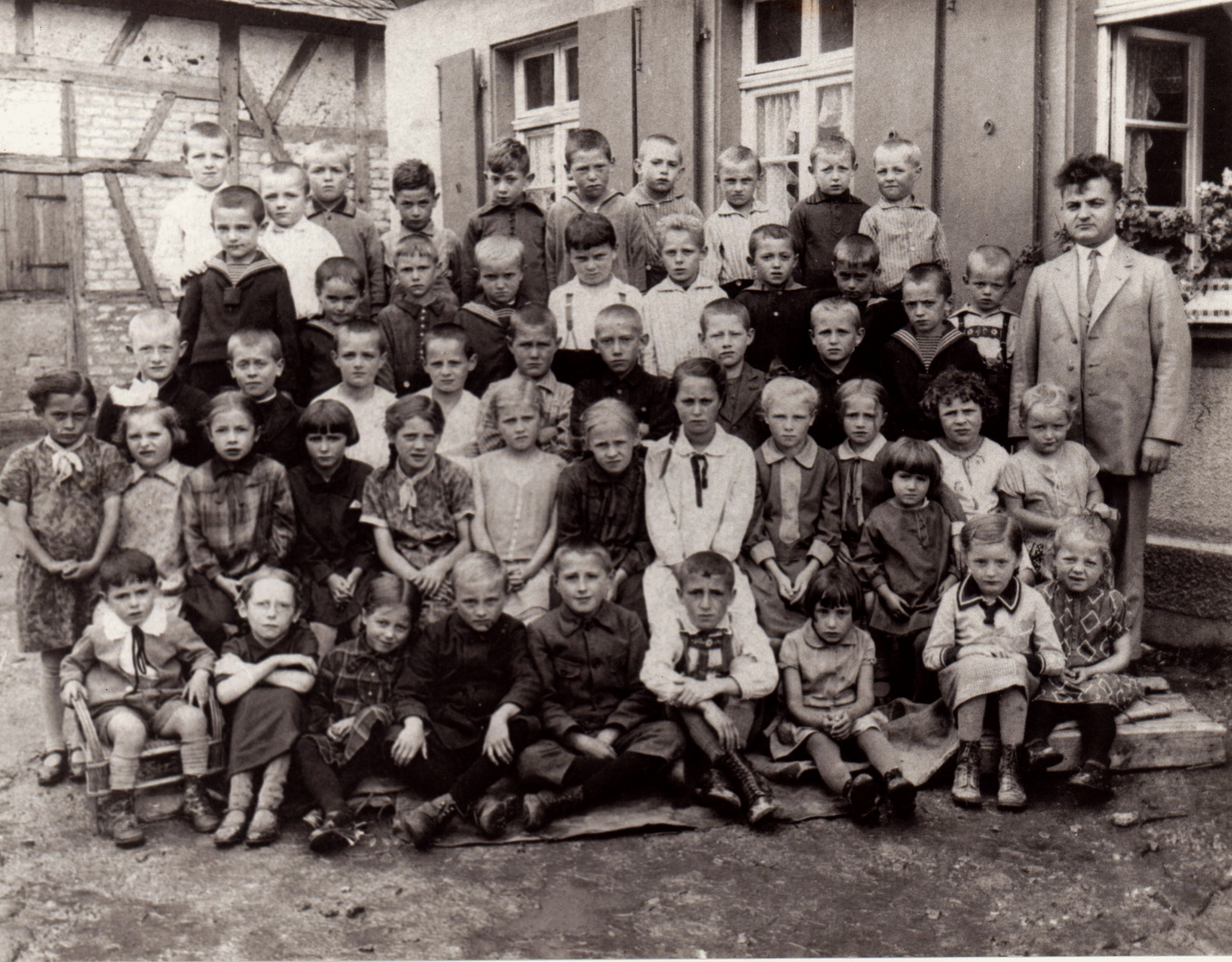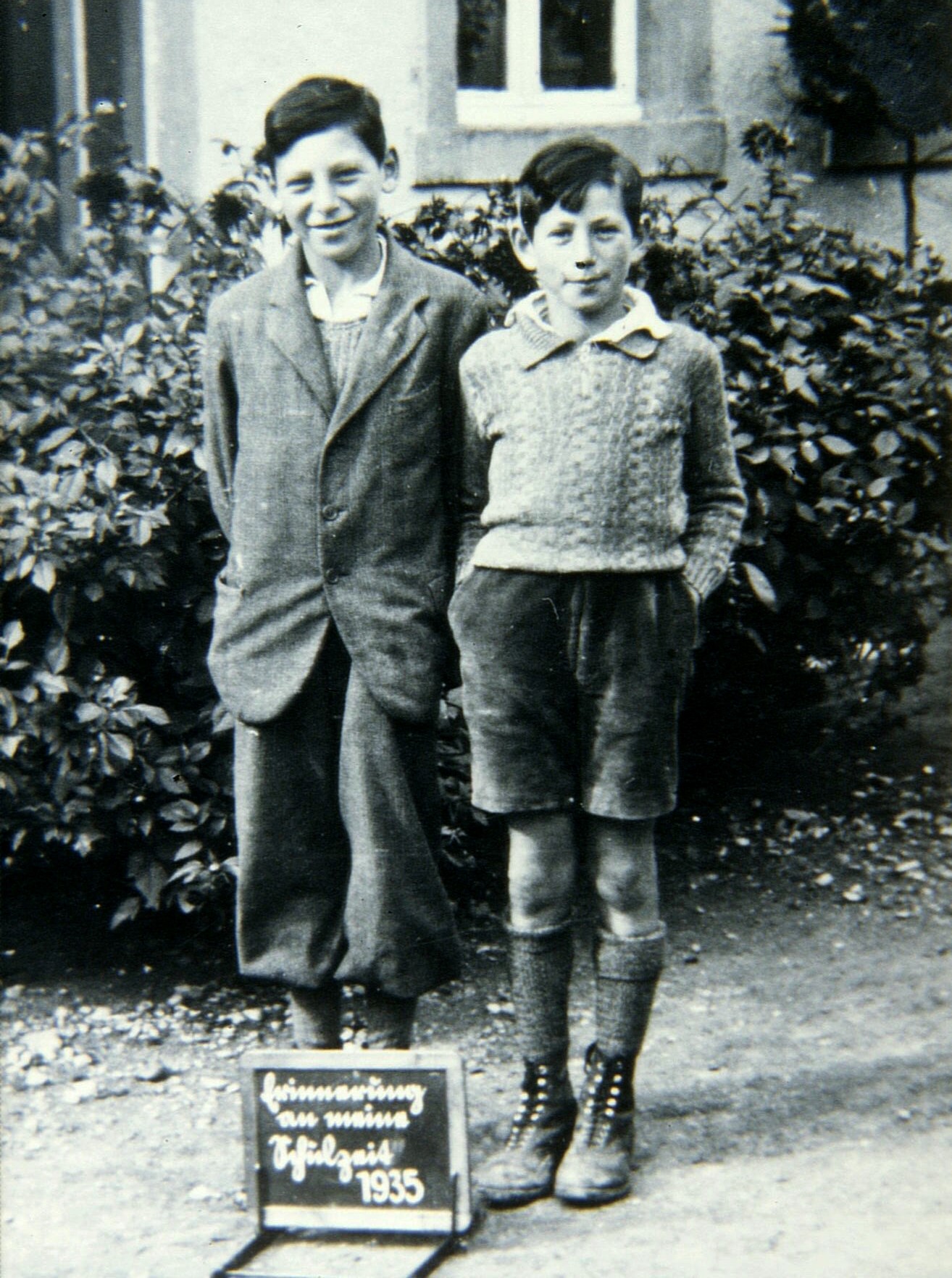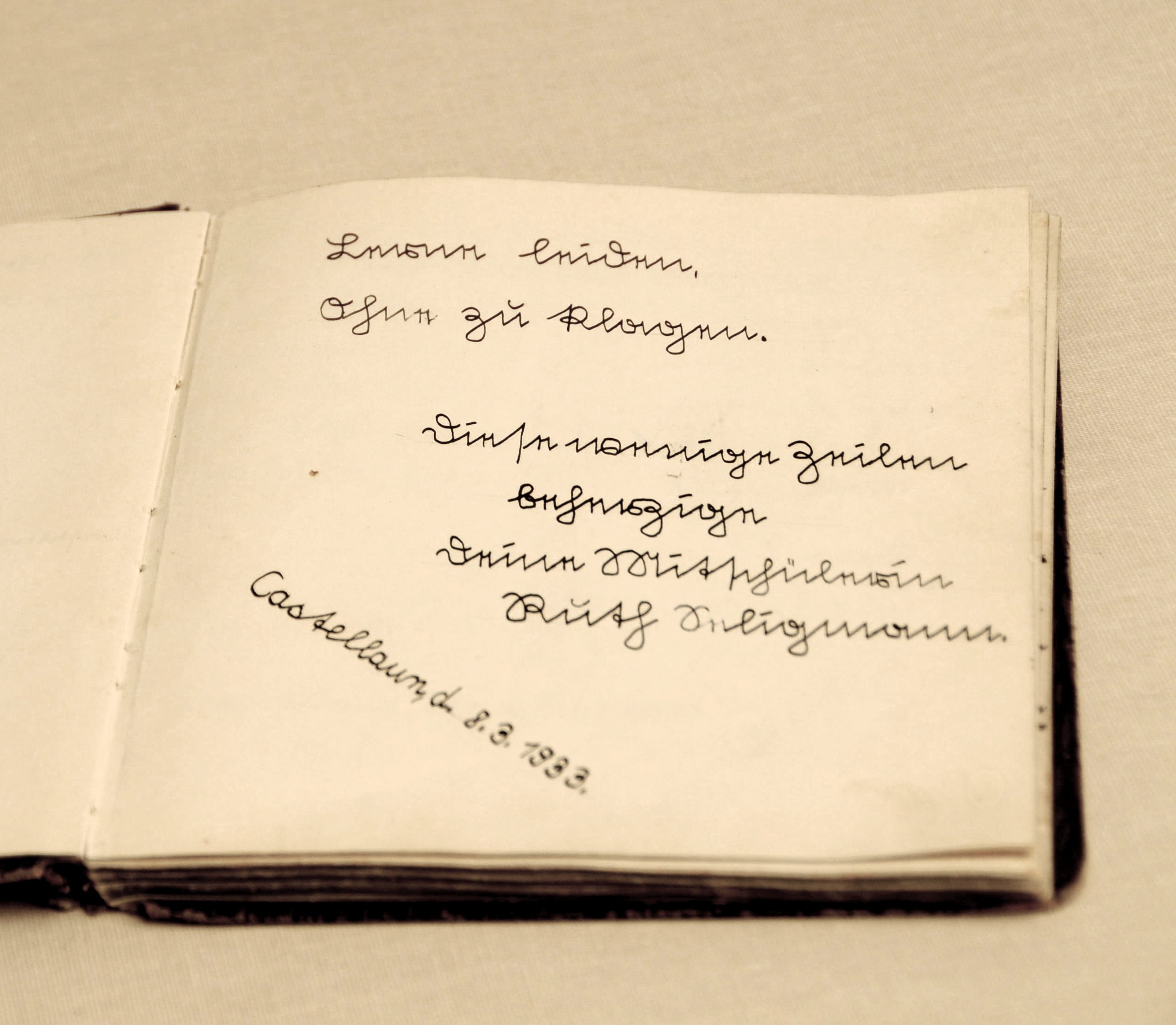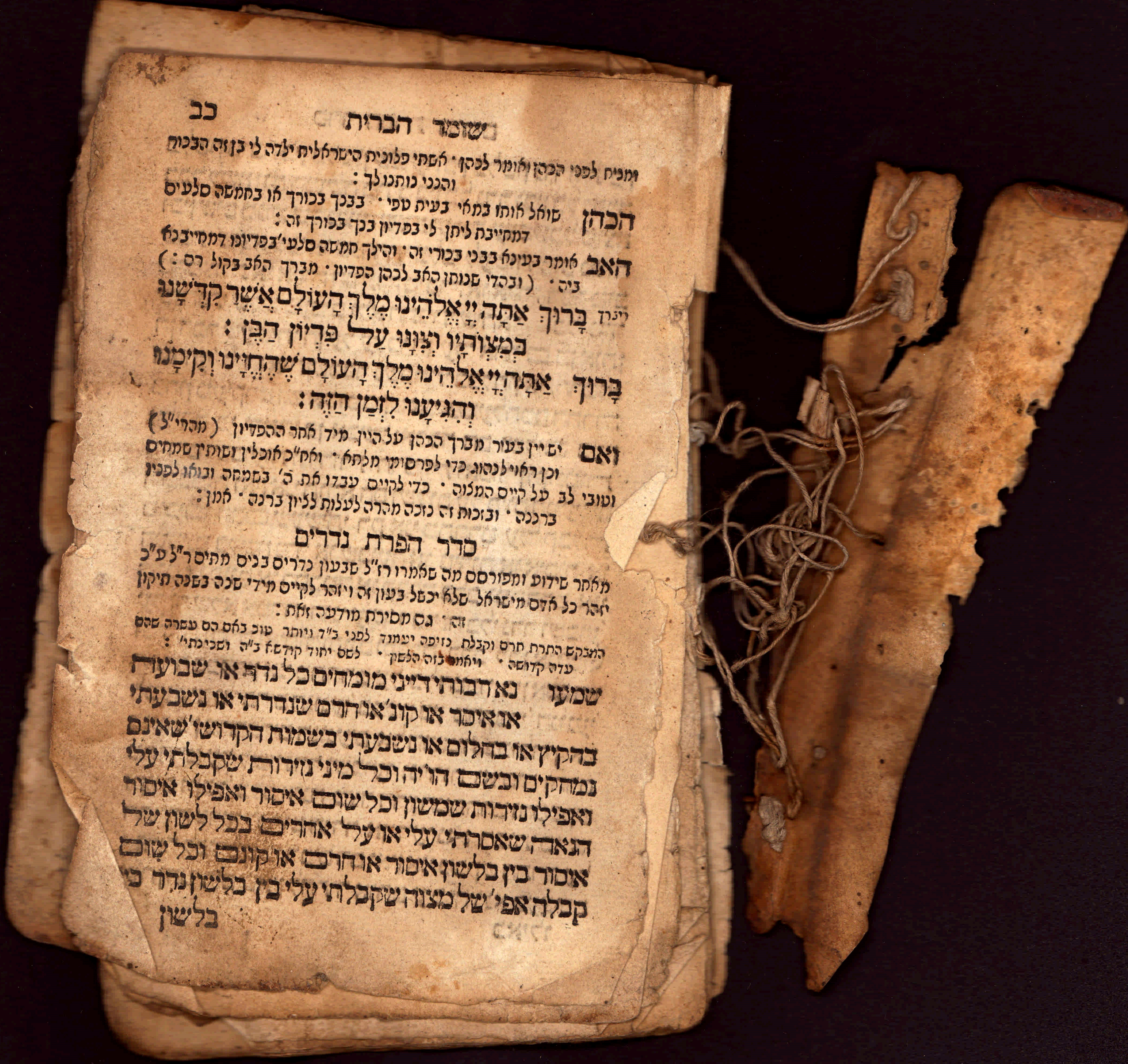
„There was no distinction made between Jews and Christians.“
In their written and oral memories, many Jews tell about a carefree childhood together with non-Jewish friends, sharing in sports and other recreational activities. Hilde Forst from Kastellaun especially remembers taking sewing lessons from Catholic nuns and exchanging visits on major religious holidays. Real friendships, however, rarely outlasted the National Socialist (NS) era from 1933 to 1945: „We stood there facing each other; actually more like strangers“, wrote Hans Shimon Forst (1917- 2011) about his Simmern High School’s 60-year reunion in 1994.
In the classroom
Jewish school children were subjected to the occasional „cane pedagogy“ from their teachers just as the Christian school children were. It didn’t matter if it was a private Jewish school or a non-denominational school, but more often than not it would have been a protestant school. Because the small Jewish communities could not "afford" their own teacher or even a rabbi, "itinerant teachers" came into the villages once a week to give the children instruction in Hebrew and the Jewish religion. This was the impetus for Arie Gabel to come to Kastellaun from Boppard and for Heymann Unikower to come to Laufersweiler from Simmern.
Examination of the Talmud and the scholarly literature is an important aspect of their religious practice, which is why the Jewish culture is characterized by a pronounced educational awareness. The resolve to afford their children a good education in order to facilitate their social advancement was strong, even among the Jews living out in the country. Yet, because the potential for achieving this in the rural areas was rather limited, many boys left their families as adolescents in order to begin a commercial or crafts apprenticeship, or even to attend a secondary school.
Son of the commandment
On the path to adulthood, (male) Jews go through various rites of passage, which mark the transition to a new religious status: Eight days after the birth of a male child, the brit milah is performed, which is a circumcision ceremony that symbolizes the covenant with God. Religious maturity is deemed to have been attained by thirteen years of age, at which time they are considered to be "Bar Mitzwah” or „Son of the commandment“; thereby assuming all the religious rights and responsibilities as a full member of the Jewish community. A feast is celebrated in the synagogue and the Bar Mitzwah is invited to read the weekly section from the Torah and pronounce a blessing over the Holy Scriptures for the first time.
The circumcision, the Bar Mitzwah and ultimately the marriage were and are the decisive stations in the life of a believer. They were even recorded on the circumcision pennants and laid in the grave upon their death.
The following slide presentation depicts a compilation of objects and photographs from the childhood and adolescence of Jewish children.
Under the swastika
“We were a really bad group of kids and played all kinds of pranks. We were two Jewish boys and five Christians. That didn’t make any difference to us. Then Hitler became chancellor after the 30th of January 1933. I came to school and my best friends yelled ‘Hey Jew, go back to Palestine. You don’t have any reason to be here.’ I was only 10 years old, and I didn't know what they meant. What do I have to do with Palestine? It was quite obvious that I was Jewish. I never tried to hide that fact, but why should I have to go to Palestine?"
Even in the 1920s, many were already trying to protect their children from the growing racial anti-Semitism. This became much more prevalent in the 1930s. Exemplary of how far things had digressed is Harry Heymann (born in 1926, later Raymon), whose mother had to tape back his protruding ears so his profile wouldn’t fit the preconception of the „typical“ Jew. Still, the children were becoming increasingly aware that something was changing.
Above all, the humiliations in, and expulsions from school were pivotal events: „That enjoyable experience of learning was totally ruined for me“ (Hans Shimon Forst). In one case, a teacher in Laufersweiler forced Marga Mayer to stand naked in front her classmates so he could “demonstrate” the racial features of a Jew.
Paula Petry: „Ä Kind steht am Zaun“ (A child standing at the fence) (from: “Iwert Dorf enaus”)
The dialect poet Paula Petry from Hennweiler recalls the exclusion from their school of her good friend, Ilse Goldberg. As a child, she couldn’t understand why they were not allowed to play together anymore.
Read by Gisela Wagner, Laufersweiler




